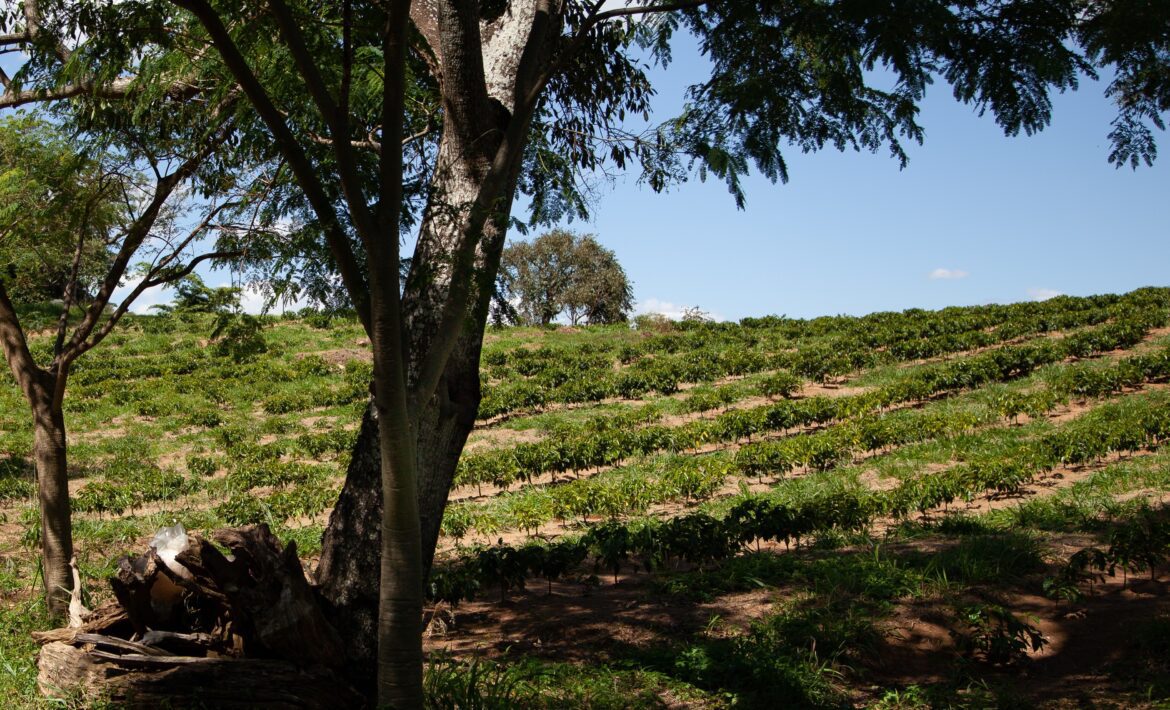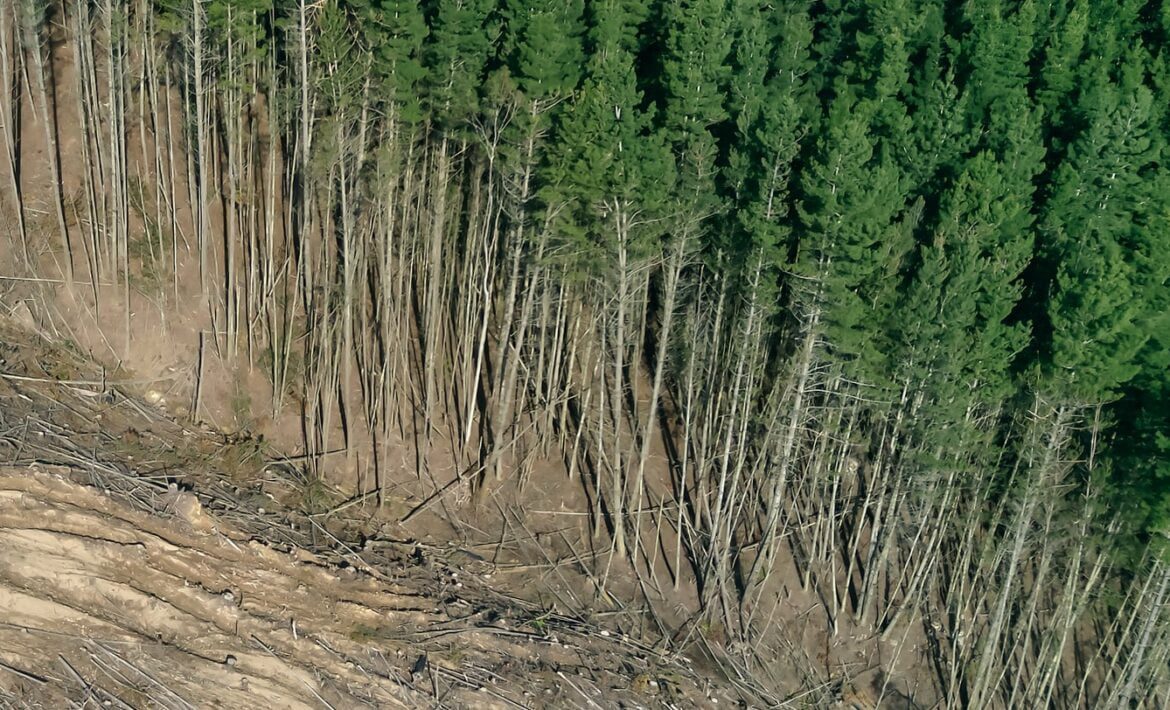
The Cocoa Industry: Its Environmental Impacts
by Anna Gardner
The cocoa industry begins with farmers growing cacao trees and ends with the billions of consumers who eat chocolate and chocolate-based products.
Cocoa farming has a very specific geography. It is grown close to the equator because the cacao trees benefit from a warm and humid climate [1]. West Africa accounts for 70% of cocoa production worldwide, with the largest producing countries being Cote D’Ivoire and Ghana [2]. The industry forms the backbone of these countries’ agricultural economies, employing about 60% of the agricultural labor force in Ghana and contributing the majority of income for these households [3].
The cocoa value chain is complex and has multiple stages connecting farmers to chocolate manufacturers through local buyers, local processors or large international buyers. The longer the value chain, the less contact farmers have with the manufacturing giants that profit from low cocoa prices [4].
The environmental effects of the cocoa industry emerge across the value chain, from the extraction of raw materials and production of farming inputs through to the industrial processing of beans into cocoa powder or cocoa butter. Some of the effects are direct, like water pollution or loss of biodiversity from the application of artificial pesticides [5]. Other effects are less visible, like greenhouse gas emissions from the fossil fuels used to transport the beans to the processing factory.
A particularly damaging local environmental consequence of the cocoa industry is deforestation, especially where cocoa farmers clear tropical forests and plant new trees rather than reusing the same land. In terms of scale, it has been estimated that 70% of illegal deforestation in Cote D’Ivoire is related to cocoa farming [6]. Another localized effect is the depletion of soil fertility and quality where unsustainable farming practices are deployed [7].
The environmental consequences of cocoa farming cannot be separated from other forms of exploitation. One of the most severe is the use of child labor in growing, harvesting, and transporting cocoa beans. There is also evidence of slave labor in the industry, where people work on plantations but are not paid [8].
Despite these forms of ecological and social exploitation, there are reasons to be hopeful about the cocoa industry.
For example, the role of tropical forests in carbon sequestration is gaining attention in the climate discussion and this has contributed to interventions to protect tropical forests [9]. One possible solution to deforestation is to invest in farming techniques that boost the productivity of existing farms, therefore reducing the incentive to clear more forests [10]. Moreover, agricultural and state banks can finance the transition period to make rehabilitating forests economically viable for smallholders [11]. Further along the value chain, the use of natural gas rather than diesel in cocoa processing factories can reduce acidification potential and greenhouse gas emissions [12].
Another solution is to increase the use of certified cocoa. Analysis has shown that certification of cocoa production through bodies like the Rainforest Alliance and Fairtrade lead to more efficient use of agrochemicals and less severe impacts on biodiversity, but currently only 16% of the world’s chocolate products are made from certified cocoa [11].
10 years ago, large chocolate companies including Mars and Nestle pledged to limit deforestation in their supply chains by 2020. Unfortunately, no company has managed to eliminate forest destruction from their supply chain and the purchase of cocoa from intermediary suppliers like Cargill makes it difficult to trace cocoa back to specific farms [9]. One chocolate company which is tackling the problem head-on is Tony’s Chocoloney. Tony’s mission is to make 100% slave free chocolate the norm, linking social and environmental outcomes by increasing awareness among farmers and consumers and investing in long-term partnerships with farmers to improve farming techniques [8]. For programmes like this, it is evident that stakeholder engagement is key to making ecologically sustainable innovations effective [13].
In this way, it is feasible that consumer demand will put pressure on chocolate companies to provide more sustainable cocoa. In the long-term, it also makes financial sense because of the harmful effects of environmental degradation on productivity [14].
Overall, sustainability improvements are of strategic importance for the cocoa industry.. Looking to wider themes, an environmental analysis of the cocoa industry is illustrative of the impacts of other agricultural commodities, especially in the context of the United Nations Sustainable Development Goal 15 to promote the sustainable use of terrestrial ecosystems [15].
Reference List
[1] Antonios Konstantas et al., 2018, ‘Environmental Impacts of Chocolate Production and Consumption in the UK’, Food Research International 106 (2018): 1012–25, https://doi.org/10.1016/j.foodres.2018.02.042.[2] Arinda Soraya Putri et al., 2015, ‘Value Chain Improvement for Cocoa Industry in Indonesia by Input-Output Analysis’, Proceedings of the International MultiConference of Engineers and Computer Scientists, vol. 2 (Hong Kong: IMECS, 2015), http://www.iaeng.org/publication/IMECS2015/IMECS2015_pp947-952.pdf
[3] M.R. Appiah, Impact of Cocoa Research Innovations on Poverty Alleviation in Ghana’ (Ghana Academy of Arts and Sciences Publication, 2004)
[4] Maria Belen Roldan et al., 2013, ‘From Producers to Export Markets: The Case of the Cocoa Value Chain in Ghana’, Journal of African Development 15, no. 2 (2013): 121–38,http://www.afeawpapers.org/RePEc/afe/afe-journl/wp … D_vol15_fall_ch5.pdf.[5] Stephen Appiah Takyi and Owusu Amponsah, ‘Ghana’s Cocoa Production Relies on the Environment, Which Needs Better Protection’, The Conversation, 2020, https://theconversation.com/ghanas-cocoa-production-relies-on-the-environment-which-needs-better-protection-134557, accessed on 8 December 2021
[6] ‘Bittersweet: Chocolate’s Impact on the Environment’, World Wildlife Magazine, 2017, https://www.worldwildlife.org/magazine/issues/spring-2017/articles/bittersweet-chocolate-s-impact-on-the-environment , accessed on 8 December 2021
[7] Jérôme Ebagnerin Tondoh et al., ‘Ecological Changes Induced by Full-Sun Cocoa Farming in Côte d’Ivoire’, Global Ecology and Conservation 3 (January 2015): 575–95, https://doi.org/10.1016/j.gecco.2015.02.007.
[8] ‘Our Mission Explained in 5 Simple Steps’, Tony’s Chocoloney, https://tonyschocolonely.com/uk/en/our-mission, accessed on 8 December 2021.
[9] Lucy Tompkins, ‘Hundreds of Companies Promised to Help Save Forests. Did They?’, New York Times, https://www.nytimes.com/2021/12/02/climate/companies-net-zero-deforestation.html, accessed on 8 December 2021
[10] Verina Ingram et al., 2019, ‘The Impacts of Cocoa Sustainability Initiatives in West Africa’, Public-Private Partnerships for Sustainable Development, MDPI, https://doi.org/10.3390/books978-3-03897-833-6.
[11] Oliver Nieburg, ‘Chop, Chop: Cocoa Dependents Must Finance Farm Training before More Forests Are Axed’, Confectionary News, https://www.confectionerynews.com/Article/2015/04/29/What-is-the-environmental-impact-of-cocoa-production,accessed on 8 December 2021
[12] Augustine Ntiamoah and George Afrane, 2008, ‘Environmental Impacts of Cocoa Production and Processing in Ghana: Life Cycle Assessment Approach’, Journal of Cleaner Production 16, no. 16 (2008): 1735–40, https://doi.org/10.1016/j.jclepro.2007.11.004.
[13] Fred A. Yamoah et al., 2020, ‘Stakeholder Collaboration in Climate-Smart Agricultural Production Innovations: Insights from the Cocoa Industry in Ghana’, Environmental Management 66, no. 4 (2020): 600–613, https://doi.org/10.1007/s00267-020-01327-z.
[14] Kenneth Peprah, 2019, ‘Cocoa Plant, People and Profit in Ghana’, Theobroma Cacao – Deploying Science for Sustainability of Global Cocoa Economy, IntechOpen, https://doi.org/10.5772/intechopen.81991.
[15] ‘Goal 15: Protect, restore and promote sustainable use of terrestrial ecosystems, sustainably manage forests, combat desertification, and halt and reverse land degradation and halt biodiversity loss’, UN Department of Economic and Social Affairs, https://sdgs.un.org/goals/goal15, accessed on 7 December 2021.



